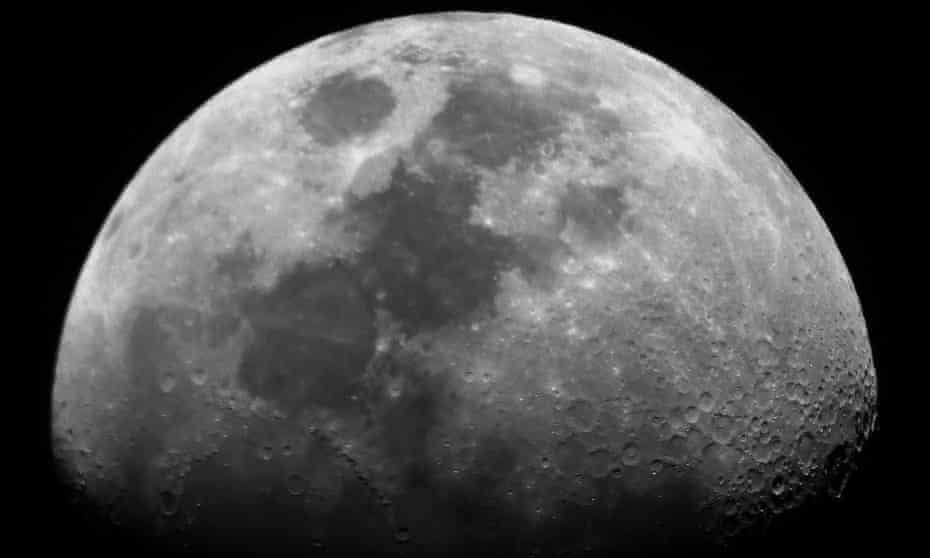Spectrum of reflected light from Kamo`oalewa closely matches lunar rocks from Nasa’s Apollo mission.

The team from the University of Arizona believe Kamo`oalewa may have been thrown into space by an ancient lunar collision.
The asteroid, named Kamo`oalewa, was discovered in 2016 but until now relatively little has been known about it. New observations suggest it could be a fragment from the moon that was thrown into space by an ancient lunar collision.
Kamo`oalewa is one of Earth’s quasi-satellites, a category of asteroid that orbits the Sun, but remains relatively close to the planet – in this case about 9m miles away.
Despite being close in astronomical terms, the asteroid is about the size of a ferris wheel and about 4m times fainter than the faintest star that can be seen with the naked eye. Consequently, the Earth’s most powerful telescopes are needed to make observations.
“I looked through every near-Earth asteroid spectrum we had access to, and nothing matched,” said Ben Sharkey, a PhD student at the University of Arizona and the paper’s lead author.
After missing the chance to observe Kamo`oalewa in April 2020 owing to a shutdown of the telescope during the coronavirus pandemic, the team found the final piece of the puzzle in 2021.
“This spring, we got much needed follow-up observations and went, ‘Wow it is real,’” Sharkey said. “It’s easier to explain with the moon than other ideas.”
The observations also showed Kamo`oalewa is in an unusual orbit, one that would be unlikely for objects that had drifted towards Earth from the asteroid belt between Mars and Jupiter.
The team are unsure how the piece of moon came to be adrift in space, in part, because there are no other known asteroids with lunar origins. However, they narrowed down the timeframe for the violent event to have occurred between 100,000 and 500 years ago.
Prof Stephen Lowry, an astronomer at the University of Kent, said: “While not 100% conclusive, the team has made a strong case that Kamo`oalewa may indeed be a collisional fragment from such a violent event [as a lunar collision].”
The findings are published in the journal Nature Communications Earth and Environment.
No comments:
Post a Comment